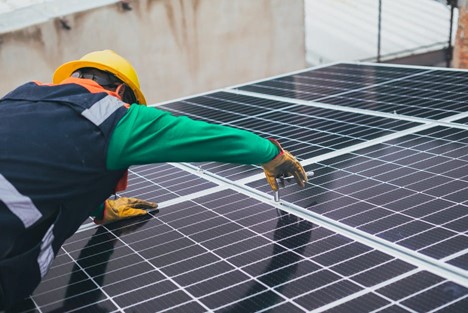Did you know that in 2020, solar energy had produced three percent of the US electricity? In three more decades, this percentage will increase sevenfold. Solar and other renewables are also on-trend for creating a sustainable home.
Many often relate to the solar industry as a booming, futuristic industry. However, that’s not the case. Solar power has been around for a while, but residential solar panels are growing in number.
But how do these panels work? Solar cells that make up solar panels help convert sunlight into electricity.
The way solar cells work is simple to understand. The article below can help explain how solar cells work.

What Are Solar Cells?
A solar cell is an electronic device that catches UV rays and turns them into electricity. This octagonal-shaped device has a size akin to an adult’s palm. It also has a bluish-black tint.
Solar cells often get put together to create solar modules. These larger units make the panels you often see on residential solar-powered buildings.
The central material for solar cells is silicon. It’s a type of semiconductor that can conduct electricity in certain circumstances.
With that, a solar cell is two different layers of silicon combined. These two layers also receive special treatment. Doping silicon makes it possible for electricity to flow through them.
How Do Solar Cells And Panels Work
Solar cells work much like batteries. But instead of generating electricity from chemicals, solar cells in panels capture sunlight. Because of how they work, solar cells are also called photovoltaic (PV) cells.
The placement of the two silicon is also crucial for solar cells to work. The lower silicon or p-type silicon has fewer electrons. Meanwhile, the upper layer or n-type silicon has more electron count.
The space between the layers is the depletion zone. This area results from electrons moving from the upper layer to the lower layer.
Once you direct light on a solar cell, light particles or photons enter and give up energy. This light energy will knock the electrons out of the lower layer and jump over to the upper layer. The more light enters, the more electrons jump and create an electric charge.
During this process, photovoltaic or light voltage occurs. This effect is what scientists call the photoelectric effect.
Solar Energy In Making A Sustainable Home
An average American home already spends $115 per month on electricity bills. With solar panels, they can save much more.
Because of how solar cells work, people can make the most out of solar energy. Thousands of watts of raw solar power hit the Earth every day.
Solar panels can only transform a fraction of this energy. However, it still generates enough electricity to sustain a home.
Renewable energy sources like solar power are essential in building a sustainable home. Now, more families call on professional solar installation services to get panels installed. You can discover more about solar panels here.
Owning solar panels helps households practice sustainable living. It also lessens the costs of a home’s utilities and even increases home value.
Understanding How Solar Cells Work
Solar cells are necessary devices for transforming solar energy into electricity. Despite how usual solar power is, many people are still wary of using solar panels for their homes.
By understanding how a solar cell works, you can brush away all your doubts about the solar industry. That way, you can take one step forward in practicing sustainable living.
Did this article help you understand solar cells? Check out more of our blog posts to discover original content.







